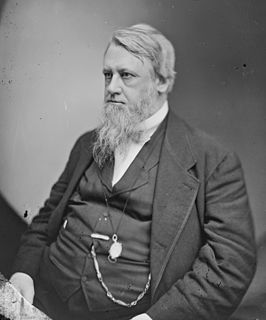
The 1908 Republican National Convention was held in Chicago Coliseum, Chicago, Illinois on June 16 to June 19, 1908. It convened to nominate successors to President Theodore Roosevelt and Vice President Charles W. Fairbanks.

The 1908 and 1909 United States Senate elections were held to determine the winners of the 31 class 3 Senate seats up for election, as well as various special elections to fill vacancies or confirm appointments.

The 1958 New York state election was held on November 4, 1958, to elect the governor, the lieutenant governor, the state comptroller, the attorney general, a judge of the New York Court of Appeals and a U.S. Senator, as well as all members of the New York State Assembly and the New York State Senate.

The 1908 New York state election was held on November 3, 1908, to elect the governor, the lieutenant governor, the Secretary of State, the state comptroller, the attorney general, the state treasurer, the state engineer and a judge of the New York Court of Appeals, as well as all members of the New York State Assembly and the New York State Senate.

The 1906 New York state election was held on November 6, 1906, to elect the governor, the lieutenant governor, the Secretary of State, the state comptroller, the attorney general, the state treasurer and the state engineer, as well as all members of the New York State Assembly and the New York State Senate.

The 1913 New York state election was held on November 4, 1913, to elect the Chief Judge and an associate judge of the New York Court of Appeals, as well as all members of the New York State Assembly.

The 1863 United States Senate election in New York was held on February 3, 1863, by the New York State Legislature to elect a U.S. Senator to represent the State of New York in the United States Senate.

The 1869 United States Senate election in New York was held on January 19, 1869, by the New York State Legislature. Incumbent Senator Edwin D. Morgan stood for a second term in office, but lost the support of the Republican legislative caucus in favor of Reuben Fenton.

The 1875 United States Senate election in New York was held on January 19 and 20, 1875, by the New York State Legislature. The legislature, with a Republican Senate and Democratic Assembly, jointly elected Democrat Francis Kernan Senator. Kernan became the first Democrat to represent New York since 1851.

The 1879 United States Senate election in New York was held on January 21, 1879, by the New York State Legislature to elect a U.S. Senator to represent the State of New York in the United States Senate.

The 1881 United States Senate election in New York was held on January 18, 1881, by the New York State Legislature to elect a U.S. Senator to represent the State of New York in the United States Senate.

The 1891 United States Senate election in New York was held on January 20 and 21, 1891, by the New York State Legislature to elect a U.S. Senator, to represent the State of New York in the United States Senate.

The 1897 United States Senate election in New York was held on January 19, 1897, by the New York State Legislature to elect a U.S. Senator to represent the State of New York in the United States Senate.

The 1899 United States Senate election in New York was held on January 17, 1899. Incumbent Democratic Senator Edward Murphy Jr. stood for re-election to a second term but was defeated by Republican Chauncey Depew. Republicans had maintained control of both houses of the legislature in the 1898 New York state election.

The 1903 United States Senate election in New York was held on January 20, 1903, by the New York State Legislature to elect a U.S. Senator to represent the State of New York in the United States Senate.

The 1911 United States Senate election in New York was held from January 17 to March 31, 1911, by the New York State Legislature to elect a U.S. Senator to represent the State of New York in the United States Senate.

The 1902 and 1903 United States Senate elections were elections in which the Democratic Party gained three seats in the United States Senate, but the Republicans kept their strong majority.

The 1880 and 1881 United States Senate elections were elections that coincided with the presidential election of 1880, and had the Democratic Party lose five seats in the United States Senate. The newly elected Readjuster senator William Mahone caucused with the Republicans, and the Republican Vice President's tie-breaking vote gave the Republicans the slightest majority. All of that changed September 19, 1881 when the Vice President ascended to the Presidency and the Senate became evenly-divided.

The 132nd New York State Legislature, consisting of the New York State Senate and the New York State Assembly, met from January 6 to April 30, 1909, during the third year of Charles Evans Hughes's governorship, in Albany.

The 1914 United States Senate election in New York was held on November 3. Incumbent Republican Senator Elihu Root chose not to seek re-election. James Wolcott Wadsworth Jr. was elected to a succeed Root, defeating Democrat James Watson Gerard.



















